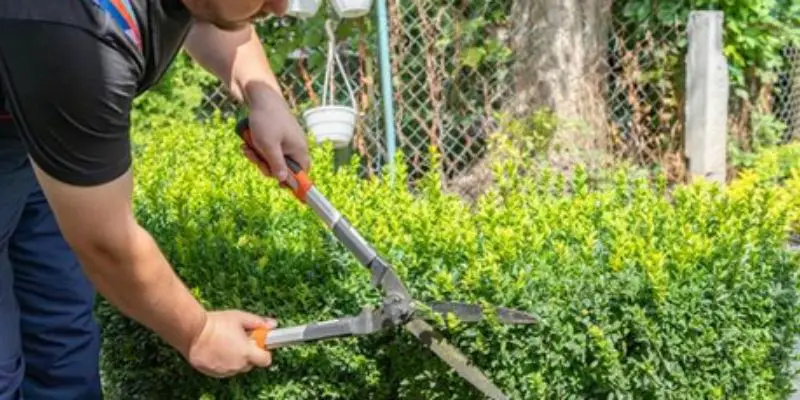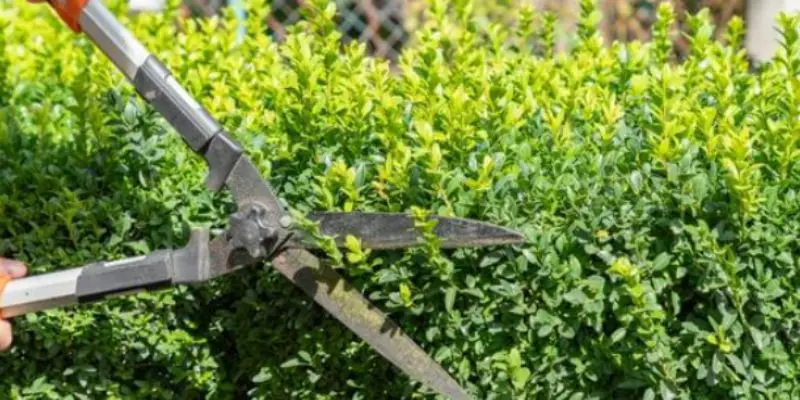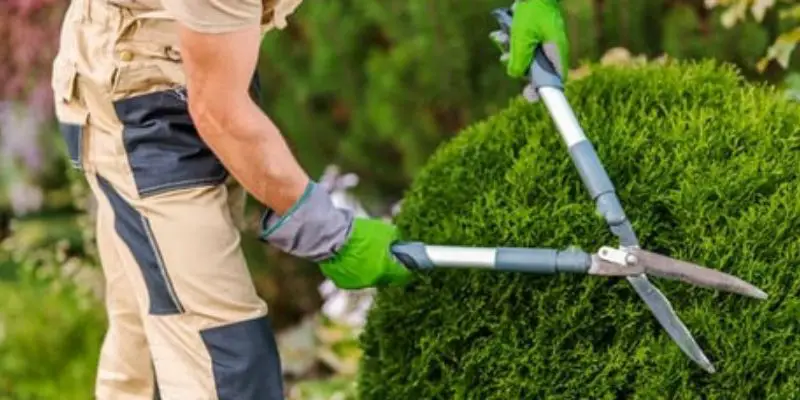With their classically full silhouettes and versatility shaping both formal and casual landscapes, boxwood shrubs remain eternally popular. However, without knowledgeable on how to trim boxwood, they can soon grow raggedy and lose structural elegance. Learning proper trimming technique restores tidy form while maintaining a beautifully authentic nature shape.
This in-depth boxwood pruning guide covers key timing, tools, cutting methods, cleanup, and aftercare for refreshing overgrown plants. Follow simple shaping guidelines showcasing the innate globular aesthetic boxwoods are prized for in garden design. Soon you’ll confidently trim boxwoods for shapely natural beauty!
When to Prune Boxwoods
As when caring for any woody plant, strategic timing is key when learning how to trim boxwoods to look natural best. Avoid pruning during spring and summer active growth cycles which wastes energy regrowing removed foliage.
The optimal time for pruning boxwoods is late winter or early spring while still dormant before new growth emerges. Alternatively, trim boxwoods immediately following the first hard frost in regions with mild winters.
Late winter pruning boosts the number of new shoots once warmer weather returns without sacrificing developing buds. It also reduces sap bleeding from cuts that can attract boring insects.
Tools for Trimming Boxwoods
In addition to timing properly, having the correct tools makes maintaining boxwoods easier. Invest in quality tools specifically designed for pruning woody shrubs that retain sharp cutting edges through repeated use.
Here are the best tools for trimming boxwoods while maintaining an organic shape:
- Bypass Hand Pruners – Manual pruners cleanly cut smaller stems up to 1⁄2 inch diameter. Curved blades efficiently slice through twiggy growth.
- Bypass Loppers – Long handles provide better leverage pruning thicker boxwood branches up to 11⁄2 inches across.
- Hedging Shears – Hedging shears quickly shear through denser foliage spots hand pruners cannot reach. Some models feature extended handles.
- Pole Pruners – Pole pruners safely trim taller boxwoods beyond arm’s reach. Look for options with interchangeable pruner and saw heads.
- Specialized topiary shears artfully shape boxwoods into round globes better than generic tools.
Now let’s review key strategies for maintaining natural boxwood silhouettes through careful hand pruning technique.
How to Trim Boxwood – Trimming Guidelines for Organic Boxwood Shaping
Careful pruning by hand rather than extensive shearing preserves the intrinsic rounded outline mature boxwoods are known for. Follow these simple rules when shaping boxwoods by hand:
- Always cut just above a healthy outward-facing leaf bud to direct new growth away from plant centers opening concealed inner foliage to sunlight.
- Use thinning cuts that remove entire branches back to a main stem instead of simply heading stems. This maintains a fuller, balanced natural form better.
- Visualize final shapes pruning one branch at a time rather than shearing off top growth indiscriminately.
- For achieving loose rounded shapes, angle cuts blending seamlessly with surrounding branches mimicking natural growth patterns.
Take care not to remove over one-quarter of total foliage when hand pruning boxwoods annually. Excessive cutting stresses plants, resulting in substantial regrowth needing additional corrective pruning again soon after.
Rejuvenating Overgrown Boxwood Shrubs
In addition to routine light annual pruning, rejuvenation pruning periodically renews aging, overgrown boxwoods with thick woody bases and sparse unhealthy top growth unable to support blooms. Severe cutting stimulates new replacement shoots transforming ugly plants into full, vigorous specimens again.
Follow this simple 3-step approach when rejuvenating neglected boxwood shrubs:
- Remove selected inward-growing branches shading boxwood centers first.
- Thin remaining branches allowing increased sunlight penetration and airflow.
- Head overly long stray branches hampering natural rounded outline back by a few inches to stimulate bushier regrowth.
Although it leaves yards looking sparse temporarily, this systematic renewal pruning concentrates growth hormones boosting production of youthful shoots quickly transforming eyesores back into shapely beauties.
How to Trim Boxwood – Caring for Boxwoods After Trimming
The last integral piece in learning how to trim boxwoods to look natural involves proper aftercare once pruning finishes. Appropriate watering, fertilizing, and cleanup after cutting prevents decline and due disease while new branching matures.
Follow these post-pruning care tips:
- Disinfect pruning tools after each cut dipping in diluted bleach to prevent spreading diseases. Rinse organic matter off blades regularly as well during pruning.
- Water thoroughly helping plants recover from stress of pruning. Continue deep weekly irrigation for new growth.
- Top dress boxwoods with fresh mulch deterring weeds competing for soil nutrients.
- Apply balanced fertilizer or aged compost around the root zone stimulating healthy regrowth after cutting.
- Monitor for signs of common boxwood diseases like blight or insects like psyllids.
Summary
Learning appropriate timing techniques and cutting strategies makes refreshing boxwoods seem far less intimidating. Always sterilize tools before storage preventing the spread of dangerous blights contaminating open wounds.
With some thoughtful hand pruning finesse, it’s easier than you think to maintain beautiful natural looking boxwood silhouettes showcasing the versatility these resilient shrubs are valued for. Soon you’ll tackle trimming your boxwood screen into fuller shape with ease.
Renew youthful verdant beauty pruned by hand sympathetically to the innate rounded form of boxwoods.
Also read:
7 Best Top Rated Electric Hedge Trimmers – A Detailed Buying Guide
Best Electric Hedge Shears – Top 6 Reviews and Buying Guide

Michael Glenn is a certified arborist and horticultural expert with over 15 years of experience in the landscape industry. His passion for plants and trees has led him to become a sought-after authority on pruning and trimming techniques. Glenn’s in-depth knowledge of proper pruning methods, timing, and tools has helped countless homeowners and professionals maintain healthy, aesthetically pleasing gardens and landscapes.
In addition to sharing his pruning expertise through practical tips, step-by-step guides, and expert advice, Glenn is also a respected author of pruning tool buying guides. His comprehensive reviews and comparisons ensure readers can make informed decisions when investing in quality loppers, pruning shears, saws, and other essential equipment. With a deep understanding of plant biology and sustainable practices, Glenn’s writing empowers audiences with the knowledge needed to properly care for green spaces.





